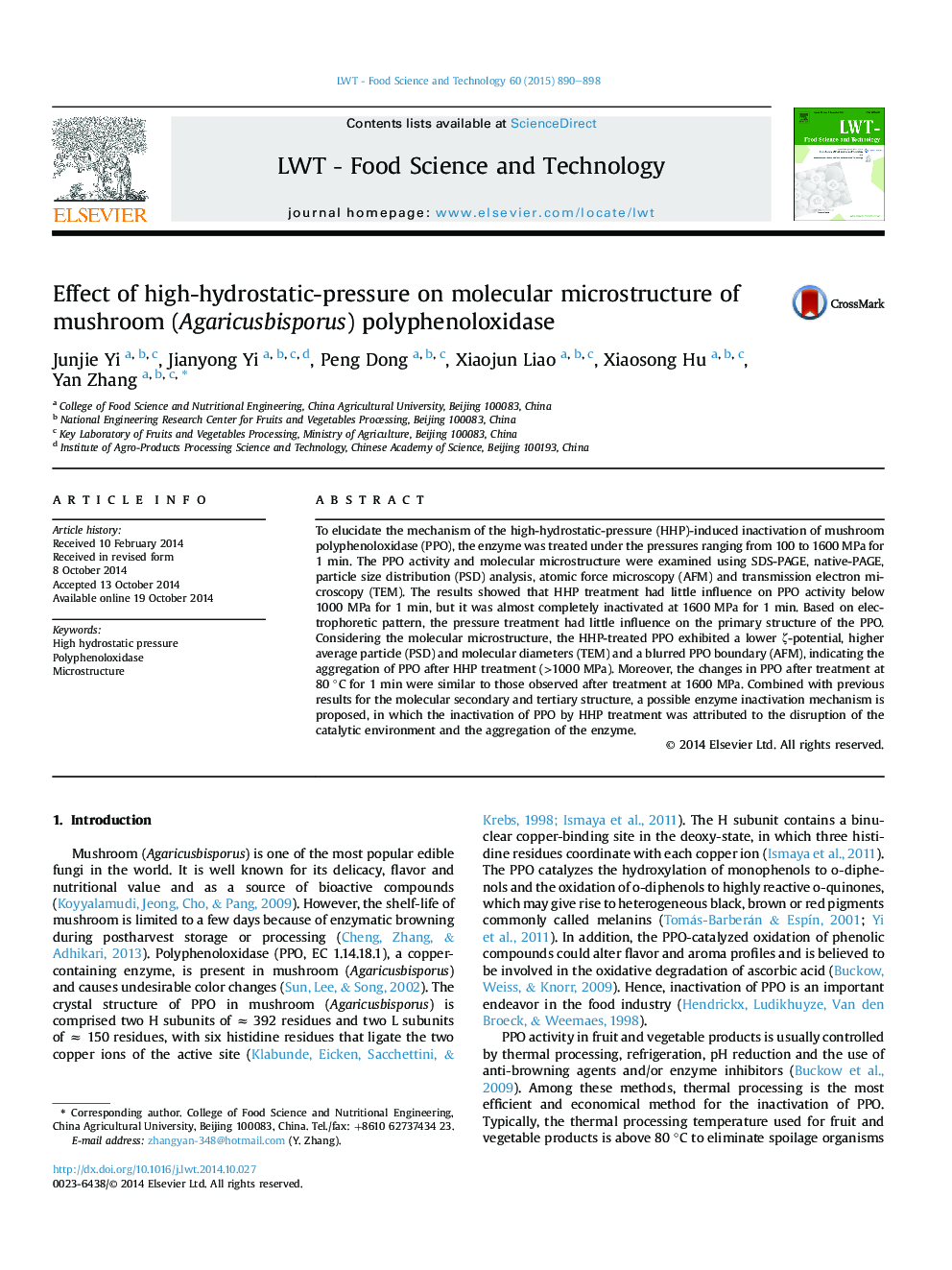| Article ID | Journal | Published Year | Pages | File Type |
|---|---|---|---|---|
| 6402470 | LWT - Food Science and Technology | 2015 | 9 Pages |
â¢HHP treatment (1000 MPa/1 min) had little influence on PPO activity.â¢PPO was almost completely inactivated after treatment at 1600 MPa for 1 min.â¢The HHP decreased ζ-potential and increased average particle and molecular diameter.â¢The disruption of the catalytic environment and the aggregation of PPO after HHP.â¢Heat played a major role in the inactivation at pressures â¥1000 MPa.
To elucidate the mechanism of the high-hydrostatic-pressure (HHP)-induced inactivation of mushroom polyphenoloxidase (PPO), the enzyme was treated under the pressures ranging from 100 to 1600 MPa for 1 min. The PPO activity and molecular microstructure were examined using SDS-PAGE, native-PAGE, particle size distribution (PSD) analysis, atomic force microscopy (AFM) and transmission electron microscopy (TEM). The results showed that HHP treatment had little influence on PPO activity below 1000 MPa for 1 min, but it was almost completely inactivated at 1600 MPa for 1 min. Based on electrophoretic pattern, the pressure treatment had little influence on the primary structure of the PPO. Considering the molecular microstructure, the HHP-treated PPO exhibited a lower ζ-potential, higher average particle (PSD) and molecular diameters (TEM) and a blurred PPO boundary (AFM), indicating the aggregation of PPO after HHP treatment (>1000 MPa). Moreover, the changes in PPO after treatment at 80 °C for 1 min were similar to those observed after treatment at 1600 MPa. Combined with previous results for the molecular secondary and tertiary structure, a possible enzyme inactivation mechanism is proposed, in which the inactivation of PPO by HHP treatment was attributed to the disruption of the catalytic environment and the aggregation of the enzyme.
